September 2019
By Dennis J Weatherall JP TM AFAITT(L) LSM, Volunteer Researcher, Naval Historical Society of Australia
It’s reputed that the first sighting of the southern coast of our Great South Land was by a Dutch ship in 1627 the “Gulden Zeepaard” under the command of a Francois Thijssen. The next record accords Rear Admiral Bruny D’Entrecasteaux in the French war ship “La Recherche”. He was looking for La Perouse who was on a voyage of discovery in 1788, in company with Boussole and Astralabe, both the latter seemingly disappearing without trace.
Able Tasman probably saw the same coast even earlier in 1644 from his sketch charts. Another voyager was Lt. John McCluer of the Bombay Marine Company in 1790, followed by Captain Matthew Flinders in 1802-1803. A Lt. James Grant in January 1800, in command of “HMS Lady Nelson” (a 60 ton Brig), discovered and named parts of the coast such as Cape Banks, Cape Northumberland, Mount Gambier, Mount Schanck. He was promoted to Commander after a battle with the Dutch in 1805 off today’s Netherlands and he was remembered with a memorial atop Mt Gambier in 1900 for his discoveries.
The Province of South Australia (as opposed to Colony)[1] was established in December 1833 when the British Parliament passed the South Australian Act. South Australia was in fact called a “Province” rather than a Colony to distinguish it from other Colonies that had transportation as their main source of population.
In the early 1850’s the then Governor Henry Young looked at ways of protecting the Province and in due course informed the “Home Authorities” that “it’d accord great satisfaction and increase confidence to his government if the English Pendant was more frequently seen in these waters” and, more importantly, subject to available funds available to the Provinces and Colonies, if a naval force were to be established on the Australian coast. It appears this submission was considered rather too radical by the “Lords of the Admiralty“.
Recommendations were forthcoming to build forts at The Semaphore, Glenelg, Torrens Island and inland towards Adelaide. The wish list also had a requirement for six gunboats, each with a 100 pounder gun, with additional guns ashore. Port Creek would be defended by torpedoes and a boom, along with telegraphic communications, with the lighthouse augmented with both a permanent and volunteer military force. This was a very ambitious programme on which to embark to defend the Province of South Australia, with a parliamentary grant of 20,000 pounds. Fort Glanville and Fort Largs, plus a military road, eventually materialised.
[1] While the ‘South Australian Act’ may have referred to the establishment as a “Province” the term was not generally used. SA was generally referred to as a ‘Colony’ e.g. Her Majesty’s Colonial Ship Protector.
In the mid 1800’s Britain made it quite clear that her contribution to the security of Australia would be the continued policy of the Royal Navy. It would assume full responsibility on the high seas and no more, therefore the question of adequate local defence measures became paramount during the American Civil War period.
Around the same time an MP, a Mr H.B.T. Strangways, suggested the purchase of a “quick turret ship” capable of carrying two 150 pound shot guns and able to steam at 18-20 knots, which was some speed at that time. Due to a change in Governor the idea was shelved for more than ten years.
In late 1859 the Province bought to the attention of “the powers” there’d been no HM ships in the waters of South Australia for nine years. This brought a flood of visits by RN ships “HMS Esk” (1,169 tons with 21 guns) along with “HMS Charybdis”, “Curacoa”, “Falcon” and “Galatea” soon after the matter had been raised.
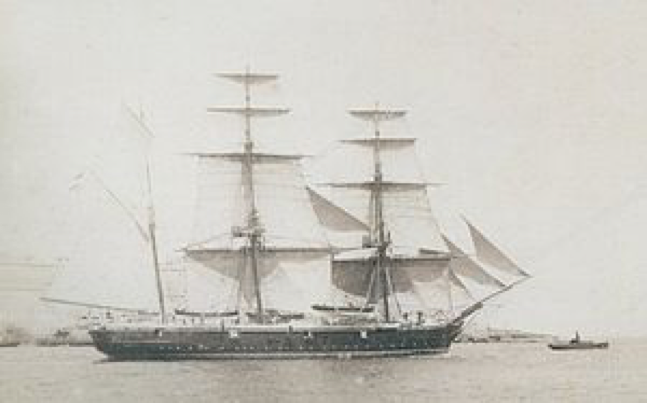
An English Act of Parliament in 1859 established a Reserve volunteer force of seamen to be available for general service in the RN in times of emergency to be known as the RNR. The Colonial Defence Act was passed into law in 1865 and this “made it lawful for any Colony to provide, maintain and use vessels of war and to raise and maintain seamen for such vessels, also to raise and maintain a volunteer force to serve in the RN in emergencies, appoint officers, obtain from the Admiralty the services of officers and men, enforce order and discipline, making all subject to the R&I’s of the RN”.
Volunteers raised in the Colonies were to form part of the RNR, the Queen may then accept an offer of use of such vessels and men, with such ships then being a ship of war of the RN. Local ships were granted authority to wear the Blue Ensign with the badge of the Colony in the fly and a Blue Pendant.
It was this Act which made possible the formation of the Naval Brigade, and the building of H.M. Colonial Ship, HMCS Protector in 1884 and her subsequent future service in the RN during the “Boxer Rebellion” in 1900. During this period as HMS Protector she flew the White Ensign and her officers given temporary commissions in the Royal Navy.
In 1862 Colonel F. Blyth of the Volunteer Military Force recommended additional protection for South Australia by stationing a gunboat “at the outer bar” of the Port River. In 1865 a Commander Parkin recommended six gunboats each capable of firing off a 100 pound shot. This recommendation was put forward for consideration after the success of Ironclad Monitors during the American Civil War.
In 1867 the government considered the introduction of a naval training ship for boys who had fallen foul to the courts. There were many against the idea, but eventually it was decided to go ahead with such a programme. A suitable vessel was acquired – the hulk “Fitzjames” – which was found in Victoria (where a similar scheme was already operating) and towed to South Australia, anchored off the coast, and used as a training ship for young boys between 1876 and 1891.
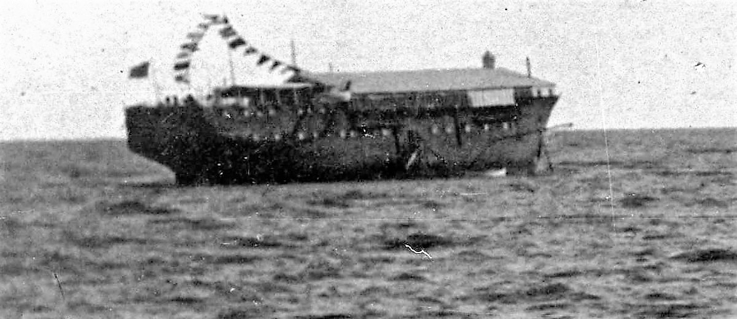
In 1876 the question of the purchase of a substantial naval vessel once again was raised. A Defence Commission was established and again it was recommended the Province purchase three gunboats. Treasurer Mr John Colton suggested a “turret ship” similar to the Victorian vessel “Cerberus” and a request was made to Victoria on how much it would cost. The SA Agent General in London, a Mr Dutton, at the time made contact with the Chief Constructor of the RN, a Mr E.J. Reed. He learned such a 1,000 ton ironclad ship carrying 25 ton guns would cost his government 29,500 pounds. The information was filed away for posterity in the SA government archives and didn’t proceed.
In 1877, following the “Russian Scare” of 1876-77, two British government men visited the Australian Colonies and SA Province to discuss their defence with their respective governments. One was a Mr W.F.D. Jervois, a future governor of South Australia. They recommended all Colonies/Provinces acquire gunboats or torpedo boats and man them with locally-recruited men for the protection of their local ports.
Another suggestion by Jervois was to purchase a vessel of 2,500 tons, ironclad with ten inch armour and heavy guns. Such an outlay – the amount of 150,000 pounds – wasn’t again all that palatable to the tax payers of SA, so the suggestion went nowhere for another five years.
Once Jervois became governor of SA (in October 1877) he suggested to the government they should hire British firm (Sir) William Armstrong & Co of Newcastle-on-Tyne to build its new naval vessel the “Protector”. The ship was constructed according to the “flat-iron” gunboat design, first introduced during the Crimean War.
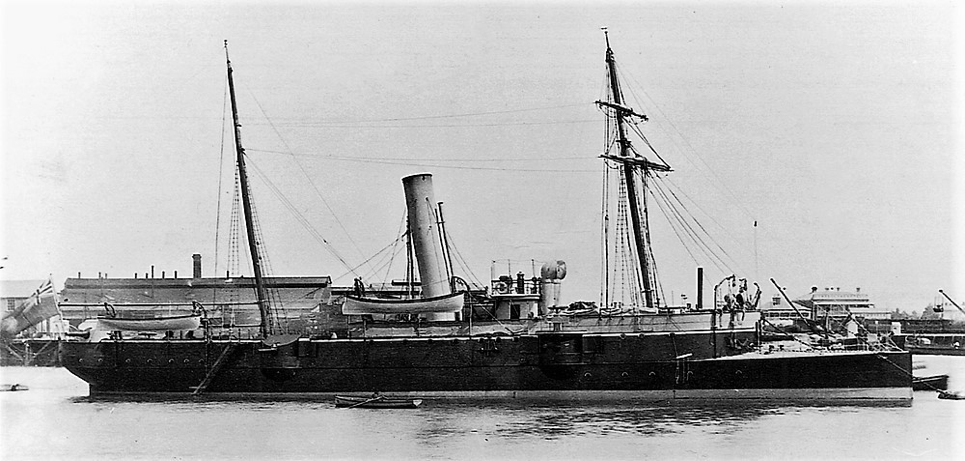
Originally estimated that such a vessel would cost 40-50,000 pounds, it was to be the largest vessel ordered by any Colony or Province at 188 ft long, 30 ft beam and 12 ft 6 in draft. Propulsion was via two compound surface condensing engines generating 1,500 hp giving a top speed of 14 knots. For extra range Protector was fitted with a Schooner rig and flying topsails.
Protector was launched in early 1884 and commissioned the same year on the 19th June – her first CO was a Commander John C.P Walcott RN. Her delivery passage to Port Adelaide via the Suez Canal arrived on station 30th September 1884. Protector served SA for fifteen years up until 1900 when she was offered up to the Imperial government as part of the expedition to China and the Boxer Rebellion. Captain William Rooke Creswell CMG had previously served in the SA Colonial Navy but at the time of his appointment to be CO for the China Rebellion was Commander of the Queensland Maritime Defence Force.
On her return to Australia from China on the 1st January 1901 she was just in time to be transferred to the new Commonwealth of Australia Naval Force and became HMAS Protector. There’s much more to tell about this gallant ship and we’ll leave its war time service and post service to another paper.
Rewinding back to 1870’s and Colonial times in South Australia. A site was selected for its strategic importance on the North Arm of the Port River and a Naval Store was established at Largs Bay. This depot was used for Naval Reserve training and the stowage of emergency items for sea rescue.
In the early 1880’s a temporary Torpedo Station was erected at this site which was later replaced by a more substantial building, some 110 ft in length, and built by the Naval Reservists. The new building consisted of a store room, lecture room and a residence for a torpedo officer – construction was in galvanised iron. A jetty was also built into deep water with a railway track system to handle stores and torpedoes. The “Station” was extended twice in 1890 and 1891 by the crew of HMCS Protector.
This torpedo station was intended to protect Port Adelaide in any hostilities, by a boom of heavy chains across the river and in turn by a gun battery. The Station could also mine the Port River as required – the government of the day acquired sufficient mines that were never used. On becoming obsolete and were in due course destroyed.
Eventually, post Federation, a Torpedo Boat was acquired in 1905. Better late than never as the saying goes! The Station was closed and equipment dismantled and transferred to the new Naval Depot at Birkenhead which was established in 1915 to replace the Largs Bay site. Birkenhead was located some 14 kms NW of Adelaide City central business centre on the Lefeure Peninsula, covering an area of 30 square miles. A Naval Drill Hall was built on the location in 1919 and is significant for its association with the early days of the Naval Reserve in South Australia and eventually with the RAN until its closure in 1990.
Between the wars, the base supported visiting fleet assets and the local Port Division of the RANR. In WWII it was commissioned as a Naval Shore Establishment as HMAS Cerberus IV on the 13th September 1939 and a year later, 1st August 1940, was recommissioned as HMAS Torrens after the river that flows through Adelaide and the River Class Torpedo Boat Destroyer of the same name. Torrens was disposed by sinking in 1930.
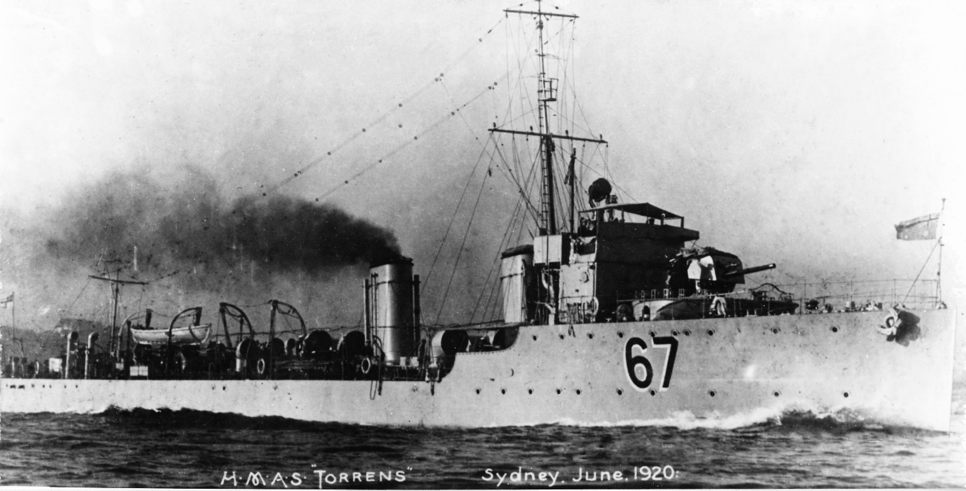
Post WWII, HMAS Torrens returned to its peacetime routine of providing a naval presence in South Australia, assisting visiting fleet ships and the base for the RANR training once more.
On the 1st March 1965, Torrens had another name change and recommissioned as HMAS Encounter which perpetuated the name of the former Light Cruiser HMS Encounter built between 1901 and 1905.
Encounter was assigned to the Australian Station and when the RAN was formed it was renamed HMAS Encounter. The name also commemorates the meeting of two great naval explorers, Captain Matthew Flinders RN and French Captain Nicolas Baudin, off the South Australian coast in 1802.
The establishment, HMAS Encounter was decommissioned on the 21st March 1994 so ending more than one hundred years of permanent naval presence in the Port Adelaide area. The last Commanding Officer was Commander Brian Gorringe ADC RAN.
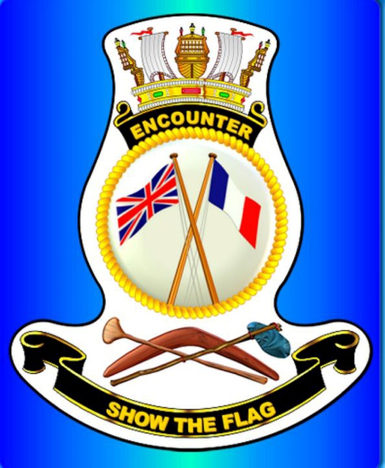
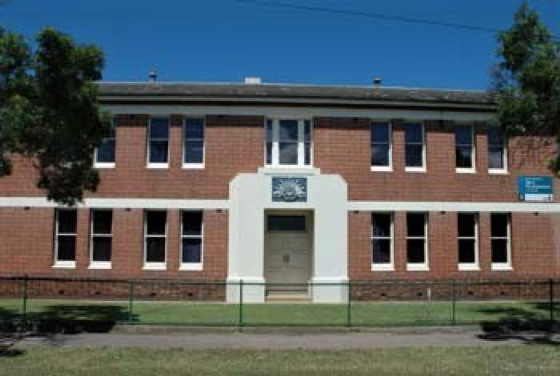
A Naval Support Office was subsequently established at Keswick Barracks in June 1994. It is located on the southern outskirts of the Adelaide parklands and shares its presence with the Army Headquarters for SA. In 1998 the establishment was renamed “Navy Headquarters South Australia”, its main function being to provide administration support to Naval personnel serving with various Defence projects in South Australia. These include; RAAF Edinburgh, DSTO Salisbury, ASC Osborne, along with Reserve personnel living in SA and detachments of both the RAN and RANR Bands.
References:
Commonwealth of Australia Archives, Canberra
Department of Defence web site
Records and Register Commonwealth Militia – Reserves
South Australian Heritage data base
South Australian Government Register 10 Jul 1886 + 28 Feb 1891
South Australian State Library data news article Robert Thomas 1891
South Australian Defence of the Colony-Province 26 Mar 1859
Successful Torpedo Practice Register 27 Jul 1885
Naval Defence Act of SA 15 Nov 1887
Information article HMCS Protector 23 Sep 1884
SA History Hub – Protector Warship of SA
Sea Power Centre Australia
Colonial Navies of Australia
National Archives – Coastal Fortifications South Australia 1800’s.




